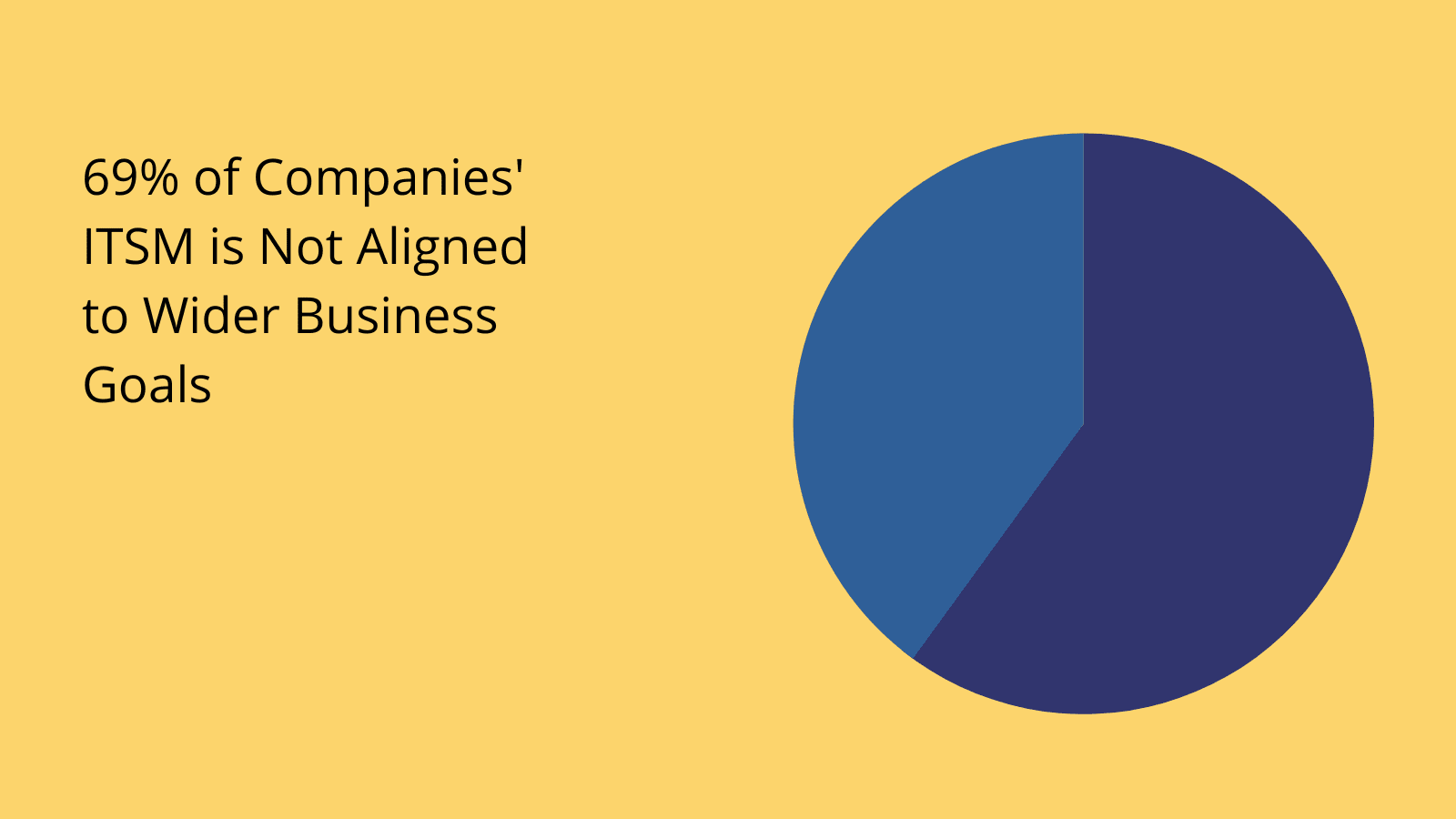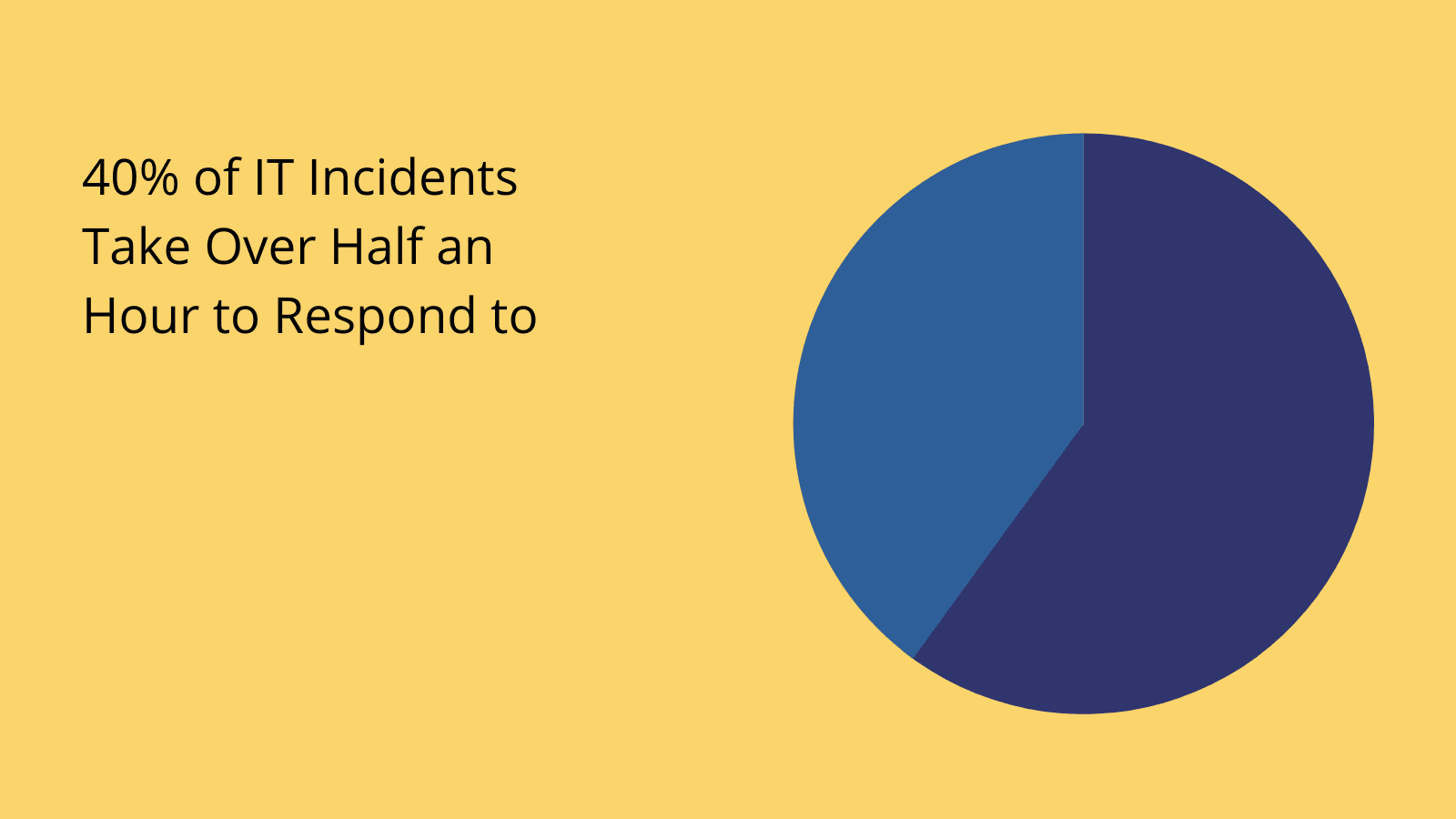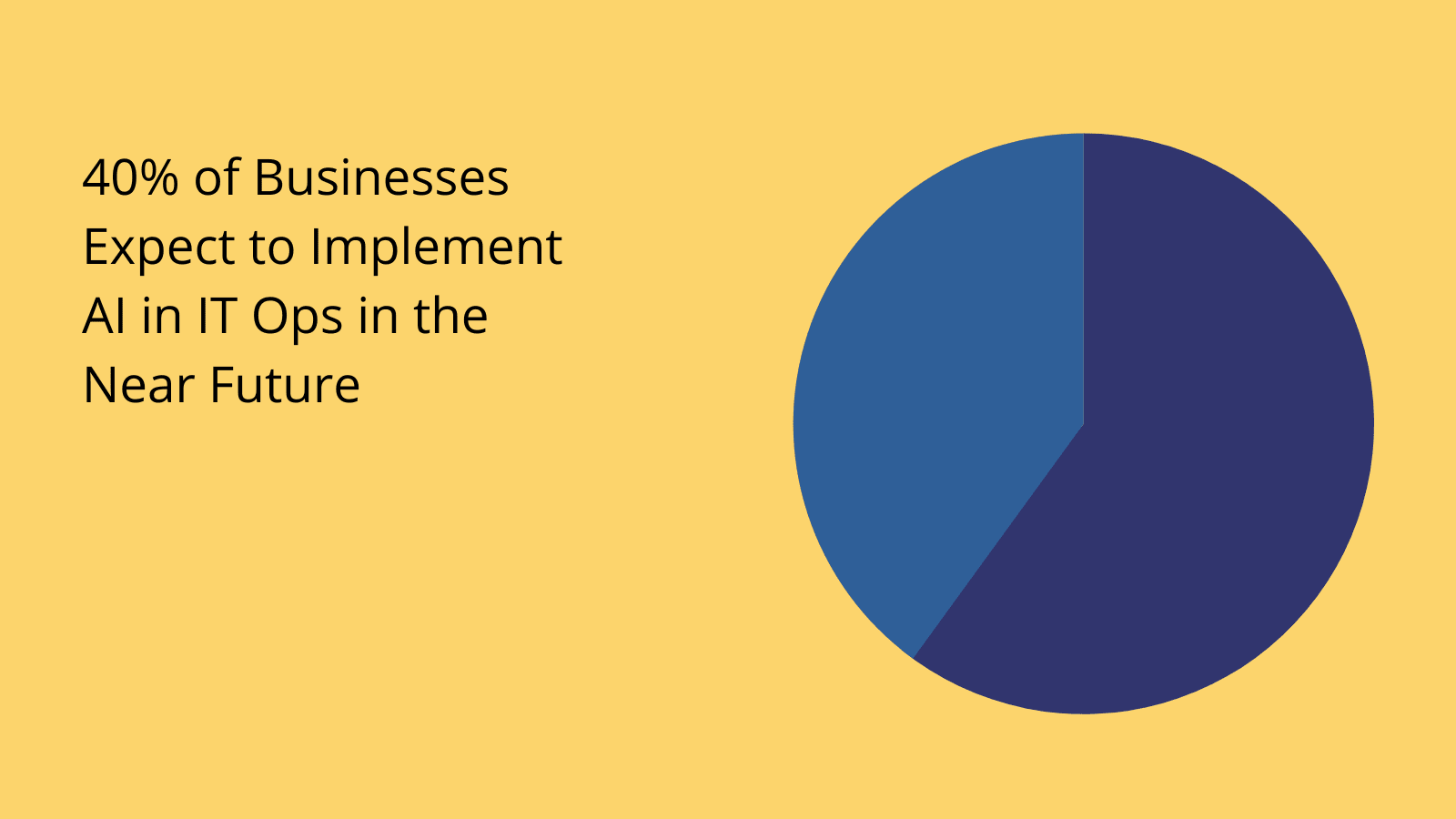ITOM vs ITSM
ITOM and ITSM are both fundamental to the way we provide technical resources, assets, and services to colleagues across all departments. But, there are important differences between the two that can come into conflict if we’re not aware of them.
Confusingly, there’s also a lot of overlap.
Today, we’re going to cover everything you need to know. Specifically, we’ll check out what each one is, what it achieves, the challenges you’ll encounter, how they differ, and how you can align them with one another.
By the end, you’ll have a clear understanding of the differences, similarities, and key benefits of both ITOM and ITSM.
Then, we’ll wrap up by seeing how Budibase empowers busy IT teams to do more with less.
Let’s jump into the basics.
ITOM vs ITSM: definitions
First, we need to get our terminology in order. So, let’s check out some definitions.
What is IT operations management?
ITOM stands for IT operations management. This is the sum of all of your efforts to manage and facilitate the daily workload of your IT team.
This is a pretty broad mandate, to say the least.
The key elements of ITOM include - but aren’t limited to:
- Resource management and scheduling tasks.
- Infrastructure, networking, and hardware.
- Lifecycle management.
- Patch management.
- Support.
- Planning.
- Monitoring, maintenance, and analysis.
- Device management.
- Software development and DevOps.
- Security
- End-user management.
- Data management.
- Procurement.
- Administrative tasks.
Broadly speaking, IT operations management draws on all of the different aspects of executing IT functions across your entire organization.
This could be a dedicated function within your IT team - for instance, the mandate of an IT ops manager. Or, it could just as easily be a shared responsibility across existing functions within the team.
What is IT service management?
IT service management is somewhat more limited in its scope - although not necessarily in its consequences.
The key thing here is that IT service management is specifically focused on how we deliver services to end-users. These might be internal users, like colleagues across the organization - or external users, like customers, partners, or members of the public.
In other words, ITSM focuses on how services are delivered.
So - what are services in this context?
We could be dealing with anything that end-users directly interact with across the service lifecycle- whether this is hardware and software assets, or even human interactions.
The classic example is an actual service desk - for answering support queries and tickets. Service management also comprises device management, user management, surveys, and any other end-user-facing tasks.
IT service management can - of course - be carried out in-house. But, in smaller organizations, it’s often more viable to outsource some or all of this.

(ThinkHDI )
Operations management vs service management: goals
So, we’ve seen what both ITOM and ITSM are in terms of definitions. But at this point, things still aren’t so clear. The trouble is that - as far as day-to-day activities go - there’s a lot of overlap.
The next thing we want to check out is what each one achieves. Let’s check out the goals of each one in turn.
ITOM - like operations management more generally - is largely focused on efficiency. The core goal is to maximize the value we’re able to derive from our IT team relative to the input costs.
Within this, ITOM also deals with the IT team’s other core priorities. That is, part of providing value here means ensuring security, reliability, and agility across all of your organization’s digital and hardware assets.
Service management obviously benefits from efficiency too, but the core goal is a little bit different.
The name of the game here is creating and delivering the most effective end-user experiences possible. Ultimately, this means ensuring that colleagues have the resources they need to carry out their own daily responsibilities.
For example, we might benchmark ITSM processes based on time to resolution, service uptime, incident rates, or other metrics relating to the quality of our user experiences.
Efficiency is still a concern - to the extent that it is with any business process - but it isn’t the number one priority as it is within ITOM.
This is an important distinction, as we can see that we might encounter competing goals when it comes to ITOM vs ITSM.
Benefits of ITOM and ITSM
To understand this better, we can think through the core business benefits of each discipline. Again, there’s a lot of overlap here - in the sense that both relate to the value we get from an effective IT team.
But, there are also a few subtle differences that we need to be cognizant of, so pay close attention.
IT operations management addresses issues across the organization, including:
- Operational efficiency and productivity within the IT team.
- Increased visibility over projects and resource usage.
- Data-driven decision-making and strategic insights.
- Rationalized resource allocation.
- Facilitating automation and digital transformation.
- Regularization within IT processes.
- Improved technical capabilities.
- Security by design.
- Performance monitoring.
- Streamlined compliance management.
- Cost reduction.
- Improved service up-time.
IT service management addresses a number of the same basic issues, but at a slightly different level. Benefits of ITSM include:
- Ensuring efficiency and productivity across the entire organization.
- Reliability, accuracy, and regularity within end-user interactions.
- Cost-effective service delivery.
- Improving accountability.
- Facilitating self-service solutions.
- End user satisfaction.
- Reduced costs associated with internal communications.
- Reduced error rates.
- Employee experiences.
- Customer satisfaction.
- Reducing unnecessary bottlenecks.
- Improved collaboration, transparency, and resource sharing between departments.
- Visibility into on-the-ground or in-situ IT solutions.
- Better understanding of user priorities and pain points.
As we can see, the most basic goals of both relate to ensuring that our IT team is able to provide the right capabilities to all of our colleagues or other stakeholders - like clients and partners.
But - the difference is in how this is achieved.
ITOM is focused on actioning improvements and optimizations within the IT department. ITSM achieves many of the same benefits by addressing the IT team’s interactions with external stakeholders.

(PagerDuty )
Challenges
We also need to have a realistic picture of the potential risks, stumbling blocks, and challenges we’re going to encounter within both disciplines.
Specifically, when it comes to implementing change to either aspect of our IT delivery, there are a few key issues that are going to constrain our decision-making and the specific strategies that we’re able to leverage.
The first of these is the cost of implementing and delivering either ITOM or ITSM. Although the idea is to create efficiency savings in the medium to long term, we’ll still need up-front investment in order to achieve this.
This includes infrastructure costs, developing new internal tools, training, project management costs, planning, external consulting fees, or even wholesale outsourcing. We’ll think about some of these in a second when we discuss resourcing issues.
At the same time, we need to deal with challenges that crop up during planning, roll-out, and changeover.
One of the most common examples here is internal resistance to change. That is - situations where colleagues might act as blockers because they have a perceived interest in maintaining the status quo.
Within IT departments, this largely relates to the fact that technical teams are generally underresourced to begin with. Therefore, we must prioritize ITOM and ITSM solutions that take account of this fact - and improve the daily workload of the teams involved.
Resourcing ITSM and ITOM
As you might have noticed, most of the challenges we outlined relate to how we resource ITSM and ITOM.
Specifically, we want to think about two kinds of resources:
- The tools and technology we can use for managing both.
- The kinds of teams that are responsible for each.
Let’s start with the tech.
Tools
In terms of technical resources for ITOM vs ITSM, there are some important distinctions to draw out.
IT operations can rely on a pretty wide suite of platforms. This shouldn’t be a surprise, given that ITOps touches on all aspects of your IT team’s day-to-day activities. We won’t get into every possible process-specific tool - we’d be here all day.
Instead, we want to outline the most common platform classes for ITOM. These include:
- Infrastructure monitoring and management tools.
- Data centralization, warehousing, and management solutions.
- Process-specific internal tools.
- SaaS platforms.
- Resource management platforms.
- Analytics and visualization tools.
- Development, testing, deployment, and DevOps tools.
- Low-code platforms.
- Automation and integration solutions.
- People management.
- Approval applications.
- Admin panels.
- Security and compliance tools.
On the other hand, IT service management typically draws on a slightly narrower range of platforms. Remember, that ITSM primarily relates to how our IT interacts directly with end users.
This requires a slightly different set of capabilities, with a greater focus on user experiences - although there’s still a large degree of overlap between the two.
ITSM primarily leverages:
- Ticketing software.
- Service desks.
- Communications and project management tools.
- Self-service apps.
- Internal tools.
- Workflow software.
- Issue logging and triaging.
- Portals and dashboards.
- User management and admin.
- Maintenance, monitoring, support, and patch management.
- Asset management.
- Software license management.
- Billing and invoicing tools - for external users.
- Forms.
Of course, where the responsibilities of both disciplines overlap, we’ll also see a reliance on some of the same kinds of software. For example, with regard to issues like support, maintenance, infrastructure, and device management.

(Gartner )
Teams
It’s also important to have a clear picture of who is responsible for ITOM vs ITSM. As we said earlier, operations management can be a dedicated function in larger organizations - or else it might be a shared responsibility.
ITSM is generally a dedicated function - except in the very smallest teams. However, it’s also more likely to be outsourced- either in part or in its entirety.
So what kind of job roles can we expect to see under each discipline?
Colleagues involved in ITOM include:
- ITOps specialists.
- Data professionals.
- Project teams.
- Team leaders.
- Infrastructure, hardware, and networking teams.
- Development and DevOps professionals.
- Analysts.
- Automation specialists.
- Other on-the-ground IT colleagues.
The actual structure of your team can also vary greatly. For example, in an enterprise context, your ITOM management team could be largely hierarchical and prescriptive, whereas decisions in an early-stage start-up could be a bit more democratic or even ad-hoc.
There are two clusters of colleagues who can be responsible for ITSM.
- IT professionals that interact directly with end users during service delivery.
- IT professionals that are responsible for facilitating this.
Examples of the first include:
- Support teams.
- Product managers.
- Service desk teams.
- Asset and device managers.
- Project managers.
- Customer success teams.
- UX specialists.
- Any other colleagues involved in service delivery workflows.
The second cluster actually draws on many of the same roles and responsibilities that we just outlined for IT operations management - especially the likes of infrastructure, development, data, security, hardware, and automation specialists.
This points to a pretty important area of overlap between the two disciplines.
That is, facilitating service delivery in this way as part of ITSM could also be thought of as falling under the umbrella of IT operations management.
But - this can actually lead to tension. Remember, ITOM and ITSM have their own distinct underlying goals. Therefore, if the same colleagues are being asked to handle aspects of both, it’s easy to see where wires could get crossed.
So, we need to think about alignment.
Align operations and service management
There are a number of strategies that we can implement to ensure that service delivery is strategically aligned with our wider operations goals.
In fact, as technology plays an ever-greater role in how we furnish end users with tools and capabilities, it’s increasingly difficult to disentangle ITOps from service management.
Therefore, more and more organizations are turning to approaches including the DevOps model, cloud transformation, and Agile project delivery in order to ensure that neither efficiency nor outcomes are compromised within their IT team’s daily workloads.
Check out our in-depth guide to internal processes to learn more.